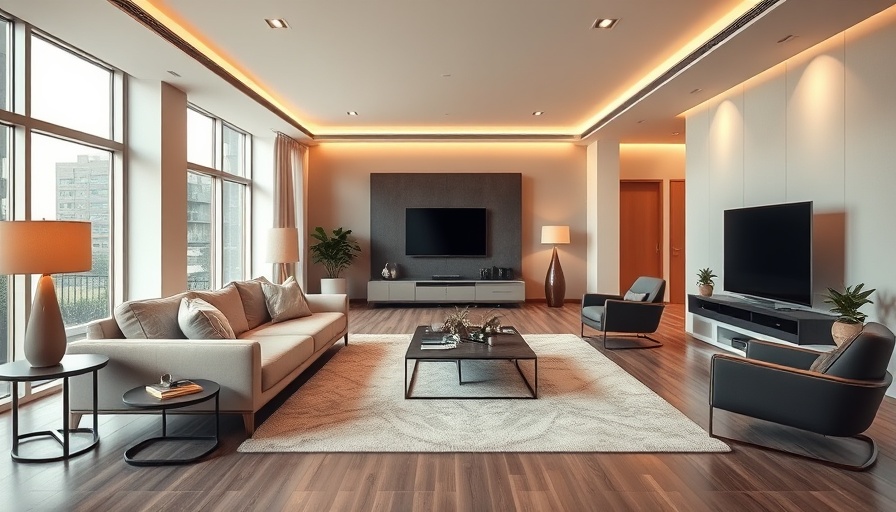
Embrace Minimalism: The Key to Modern Living Room Design
In a world filled with distractions and clutter, the concept of minimalist living has taken center stage in interior design, especially for modern home interiors. A minimalist living room not only creates a serene space but also reflects the owner's style in an elegant way. For those looking to revamp their living quarters without sacrificing comfort or functionality, interpreting minimalism can lead to stunning outcomes.
Choosing the Right Colors and Textures
The foundation of minimalist decor rests in color selection. Soft, neutral tones like whites, beiges, and light grays can create an airy atmosphere, allowing the room to feel larger while inviting warmth. To some, this may seem too stark; however, the beauty of minimalism lies in the layered textures you can incorporate. Soft throw blankets, sleek furniture, and plush cushions in monochromatic hues create a cozy ambiance without overwhelming the senses.
Essential Furniture Choices for Small Spaces
When it comes to furniture selection, it is crucial to opt for pieces that serve multiple functions. Consider a stylish sofa that doubles as a sleeper for guests or a coffee table that provides hidden storage space for books and games. These choices not only save room but also help maintain the clean aesthetic minimalism strives for. Look for low-profile furniture designs that contribute to a spacious feel, especially in small living rooms or studio apartments.
Maximizing Natural Light
Natural light is a game-changer in any space, but it’s particularly vital for minimalist environments. To enhance light in your small home, forgo heavy drapes and opt for sheer window treatments. Not only do they invite the sun's rays, but they also maintain privacy without sacrificing brightness. Consider using mirrors strategically across the room to reflect light, creating an illusion of more space and depth.
Smart Use of Wall Decor
While a minimalist approach suggests a reduction of decor, well-placed wall art can make all the difference. Opt for a single large canvas or several smaller pieces arranged in a gallery wall style, using abstract designs or black and white photography to keep it chic. The key is balance—enough decor to express personality without going overboard.
Integrating Functional Decor Items
Being minimal doesn't mean you should compromise on style; instead, think of decor items that also serve a purpose. Accent lighting, like sleek floor lamps or sconces, illuminates spaces while adding an element of sophistication. Decorative baskets can cleverly hide kids' toys or throw blankets, maintaining order and style in the family room.
The Influence of Minimalism on Mental Health
Beyond aesthetics, minimalism is known for its positive impact on mental health. Studies have shown that decluttering spaces can reduce stress and promote a sense of peace. By embracing minimalist living, individuals often find a newfound focus and clarity in their daily lives, creating a balanced atmosphere perfect for relaxation and connection.
Actionable Steps to Create Your Minimalist Retreat
To embark on your minimalist journey, start with these actionable steps:
- Evaluate your current furniture and decor—what serves a purpose and what doesn't?
- Choose a neutral color palette and accent it with soft textures.
- Focus on maximizing light and open space.
- Invest in multifunctional furniture to reduce clutter.
- Incorporate a few meaningful decor pieces instead of overcrowding surfaces.
By following these guidelines, you can create a tranquil retreat in your home while adhering to modern design principles.
In conclusion, minimalist living room designs are not only aesthetically pleasing but also beneficial for overall well-being. The act of simplifying one’s space can lead to profound changes in how we interact with our environments, promoting calm and clarity amidst the chaos of life. So take the leap into minimalist design—your peaceful sanctuary awaits!
 Add Row
Add Row  Add
Add 




Write A Comment